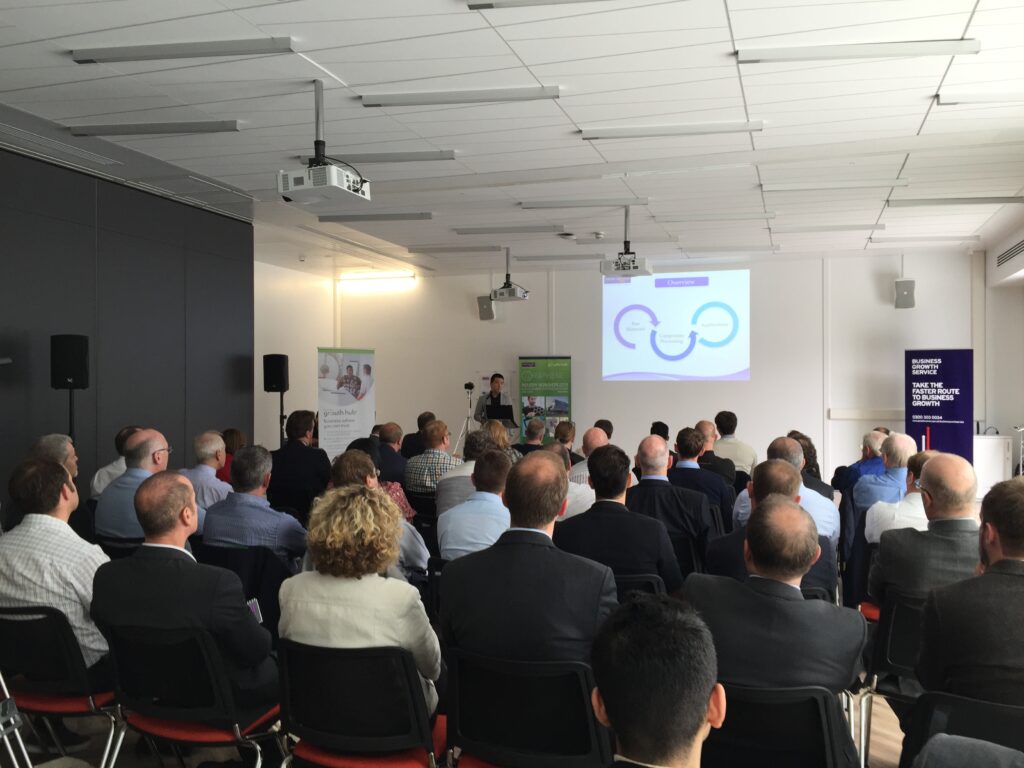A view on graphene from the outside
Applications Collaborations 26 June 2015
Nick Parker, a newly recruited Digital Marketing Officer for the Faculty of Engineering and Physical Sciences at The University of Manchester, writes about his perspectives on the Graphene Week Industry Workshops.
I arrived early on the morning of the fourth day of Graphene Industry Workshops, but the conference space at the National Graphene Institute was already busy with industry professionals and academics meeting one another. Even before the workshop’s official kick-off, it seemed clear that everyone in attendance was keen to make the most of this opportunity to connect, and explore how they might integrate the burgeoning graphene industry into their own business plans.
Within the first half hour, I had been able to chat with: a business owner working in industrial glass manufacturing, who was thinking about the way graphene might help as a coating agent in his products; a professional in sales for industrial machinery, interested in how graphene production might affect her orders in the future; and a civil engineer who had come independently to the event, as he considered changing career paths so as to get involved in this fast-growing industry.

This diverse group was given a tour of the NGI’s state of the art facilities, and it was easy to see how, as Business Director James Baker put it in his opening remarks, the NGI functions as an “accelerator” for graphene’s regional and national development. As a new staff member at the University, and neither a scientist nor engineer by training, it was a little overwhelming to think about the hive of activity around the wonder material that is graphene. Thankfully I was able to get a much better grasp of the practicalities of this material in Professor Ian Kinloch’s talk, a Professor of Materials based at the Institute.
Perhaps Prof Kinloch’s most crucial message about graphene was that its diversity of applications was based on many different forms of the material. As attendees, we could see from this outline of grades and types of graphene, that it was both useful and available in forms which could be practically affordable for a range of industrial applications. He went on to show a slide packed with possible options for applications, so he could encourage these industry professionals to think about using graphene creatively when they returned to their businesses.
Throughout the day the message was clear: while graphene was a Nobel Prize-worthy discovery a decade ago, now industrialists and academics must work together to drive forward applications in the real world.
collaborationcommercialisationgrapheneGraphene Week 2015James BakerManchesterNational Graphene InstituteThe University of Manchester





Leave a Reply